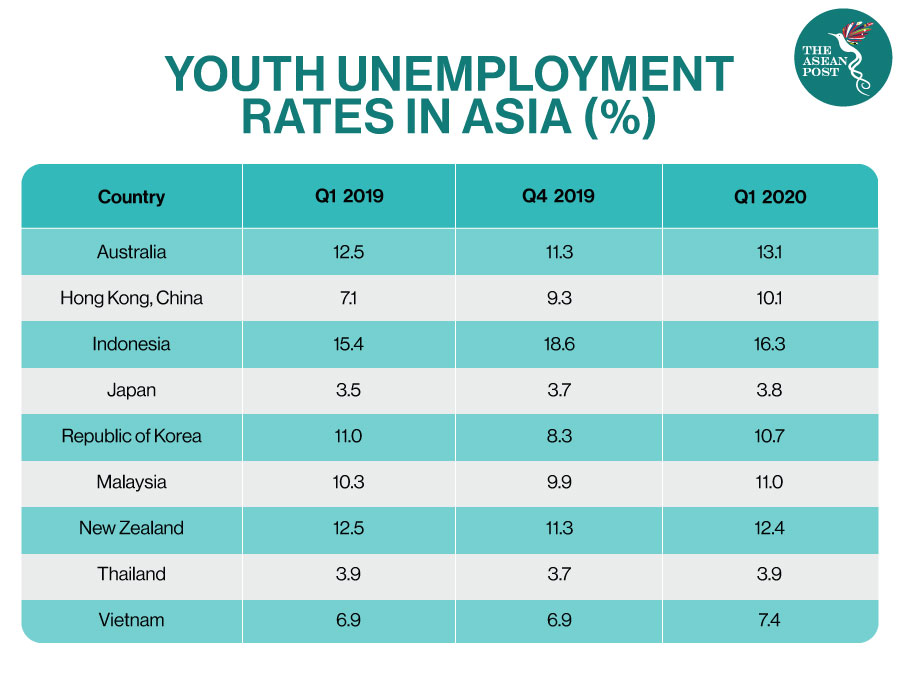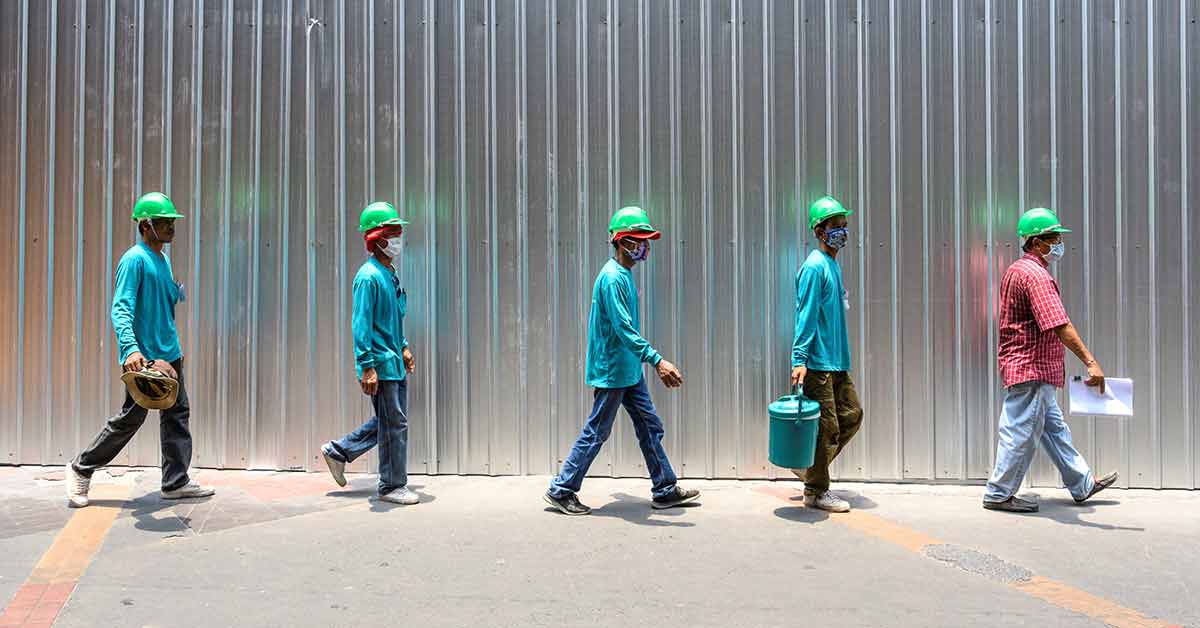The COVID-19 pandemic has brough severe disruptions to economies and labour markets worldwide. Back in April, the Asian Development Bank (ADB) warned that the pandemic will threaten the employment of 68 million workers across Asia if the outbreak goes on until September.
As for young people aged 15 to 24 who have faced a tough labour market even before the coronavirus crisis began, the pandemic has had disproportionate impacts on their employment prospects.
A joint report by the ADB and the International Labour Organization (ILO), has stated that the crisis will affect young people differently, depending on their situation in the labour market.
“Some youth will face difficulties balancing education and training with the need to complement family income. Others will face the challenge of searching for their first job in a labour market of severely constrained demand. Many more young people will face difficulty transitioning from irregular and informal work to decent employment. And a growing number of youths not in employment or in education or training (NEET) may become increasingly detached from the labour market,” noted the two organisations.
A recent survey by the YOUTH team in the Employment, Labour Markets and Youth Branch of ILO, has revealed that young people were around three times more likely to be unemployed than those aged 25 and above. And most of the job losses among these youths were due to businesses ceasing to operate or being laid-off.
Other than that, young workers in clerical support, services, sales, and crafts and related trades were more likely to have stopped working. The ILO cited lockdowns and social distancing measures to be the cause of higher incidences of work halts among employees in occupations where tasks may demand frequent customer contact.
Unfortunately, the report does not come as a surprise as the pandemic has ravaged livelihoods across the world. The same report by the ADB and ILO also suggested that lockdown measures in response to COVID-19 have resulted in unprecedented reductions in hours worked which affect workers of all ages. However, amid the pandemic, youths experience the loss of working hours differently from adults.
According to the joint report, youths are more likely to experience outright job loss than temporary job suspension. Given youths’ lower job tenure, organisations are likely to make less of an effort to retain them on the payroll during lockdown periods. An example of this is seen in Thailand where the loss in working hours was on the scale of eight percent for youth and five percent for adults.

Rising Unemployment
In ASEAN member state Malaysia, it was reported that job losses in the country increased by 42 percent year-on-year for the first quarter of 2020. The Social Security Organisation’s (SOCSO) Employment Insurance System (EIS) stated that the pandemic has impacted businesses in the country; with businesses experiencing a 37 percent drop in demand or 42 percent drop due to being unable to operate as per usual. The unemployment rate in the country is forecast to hit four percent in 2020 compared to 3.2 percent during the 1997 Asian financial crisis.
“The youth unemployment rate has remained mostly steady at eight to 11 percent. However, they are the age demographic most vulnerable to retrenchment,” according to a report by SOCSO.
Whereas neighbouring Indonesia reported that the country’s unemployment rate could hit its highest in more than a decade rising to 9.2 percent or nearly 13 million people by the end of the year. Local media stated that with the archipelago’s economic growth shrinking to 2.97 percent during the first quarter of the year, enterprises had started cutting recruitment of new employees as early as March.
Hizkia Polimpung, a researcher at Bhayangkara University in Jakarta said that the impact of the pandemic will be worse for young job seekers as they will have a reduced “wage reservation”, the lowest salary at which a worker would be willing to accept a particular type of job – compared to experienced workers.
Other than that, it was reported that the number of unemployed youths in Thailand will also double this year, as well as in Vietnam.
The ILO report noted that job losses among youths will continue throughout 2020 as between 10 and 15 million youth jobs may be lost across the Asia-Pacific region.
Recommendations
The severe economic and labour market impact as a result of the pandemic on youth employability and employment requires urgent, large-scaled and targeted responses. One of the recommendations by the ILO is to design well-targeted active labour market programmes.
“A comprehensive and targeted approach to active labour market programmes (ALMPs) must be at the centre of a youth employment response and recovery package,” noted the ILO.
This includes providing youth-targeted wage subsidy programmes, supporting the young in employment planning and job search assistance, expanding youth access to reskilling and upskilling, and investing in youth entrepreneurship.
Related Articles:
